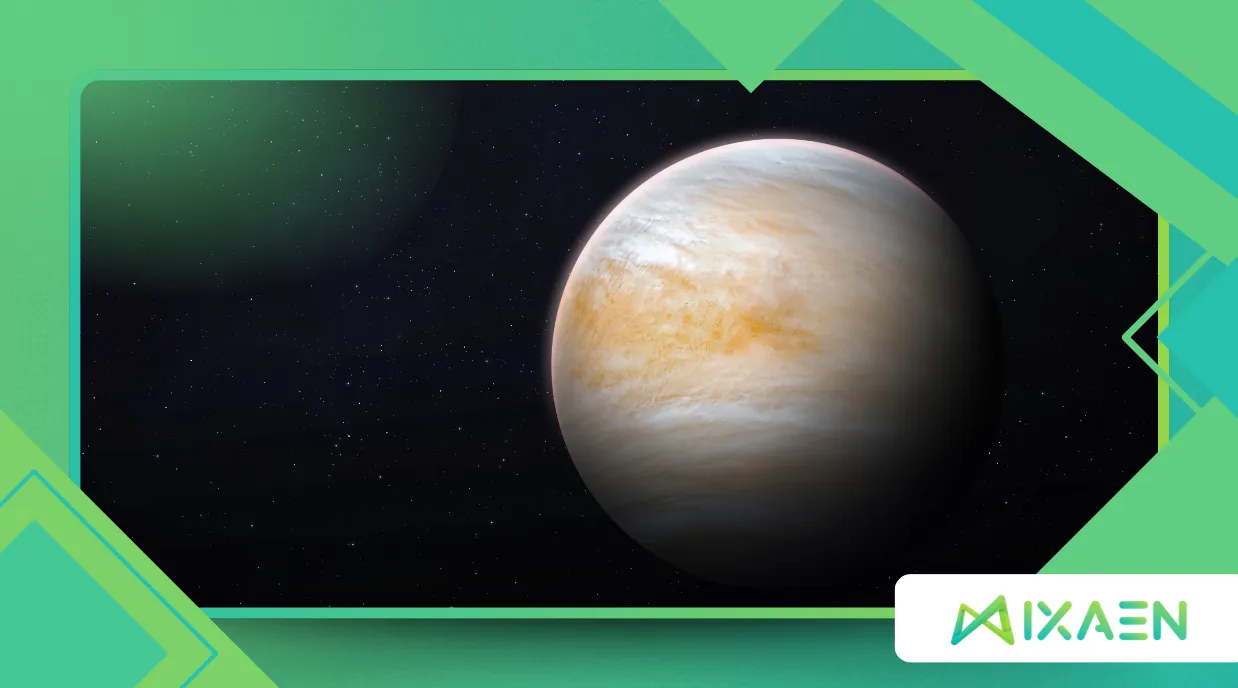Life in the Clouds of Venus: Scientists Detect Possible Biological Signs

The phrase “Life in the Clouds of Venus” has ignited the imaginations of scientists and space enthusiasts alike, as recent findings suggest that microbial life could exist in the planet’s sulfuric acid-laden clouds.
Anúncios
This revelation challenges our understanding of habitability and opens new doors for astrobiological research.
The implications of these findings extend beyond Venus, prompting scientists to reconsider what environments might be suitable for life.
As we explore more about our solar system, the potential for life in extreme conditions could lead to groundbreaking discoveries about the nature of life itself.
A Surprising Discovery in an Unlikely Place
Venus, often described as Earth’s “evil twin,” is a hellish world with surface temperatures hot enough to melt lead and atmospheric pressure 92 times that of Earth.
However, the planet’s upper cloud layers, about 50 kilometers above the surface, present a more temperate environment.
Here, temperatures range between 30°C and 70°C, and pressures are comparable to those on Earth.
It is in this unlikely zone that scientists have detected phosphine gas—a molecule often associated with biological activity.
This discovery has sparked a renewed interest in Venus, a planet that has long been overlooked in the search for extraterrestrial life.
The potential for microbial life in such an inhospitable environment challenges previous assumptions and expands the criteria for habitability in the universe.
For more information about Venus and its atmosphere, visit NASA’s Venus Exploration.
The Science Behind the Discovery
The discovery of phosphine was made using the James Clerk Maxwell Telescope in Hawaii and the Atacama Large Millimeter/submillimeter Array (ALMA) in Chile.
These advanced instruments detected the gas’s spectral signature, which stands out against the harsh chemical backdrop of Venus’s atmosphere.
While phosphine can be produced by non-biological processes, such as volcanic activity or lightning, the amounts detected on Venus far exceed what these mechanisms could plausibly generate.
To put this into perspective, let’s examine the data:
| Phosphine Detection on Venus | Concentration |
|---|---|
| Upper Cloud Layers | 20 parts per billion |
| Earth’s Atmosphere (Natural) | <1 part per trillion |
This stark contrast suggests that the phosphine on Venus may have a unique origin.
Scientists are now exploring whether microbial life could survive in the planet’s clouds, despite the high acidity and lack of water.
Moreover, the methods used to detect phosphine may lead to advancements in remote sensing technologies that could be applied to other celestial bodies.
As researchers refine their techniques, they may uncover more about the chemical processes occurring in the atmospheres of other planets.
+ Habitability Conditions: What Makes an Exoplanet Ideal
Could Microbes Thrive in Venus’s Clouds?
The idea of “Life in the Clouds of Venus” is not as far-fetched as it might seem.
On Earth, extremophiles—organisms that thrive in extreme environments—have been found in acidic hot springs, deep-sea hydrothermal vents, and even within glaciers.
These microbes have adapted to conditions once thought inhospitable, raising the possibility that similar life forms could exist elsewhere in the solar system.
Venus’s clouds, while hostile, offer a niche environment where life could potentially survive.
The droplets of sulfuric acid in the atmosphere might provide a medium for microbial activity, shielding organisms from the planet’s intense surface heat.
Additionally, the presence of trace amounts of water vapor and other chemicals could serve as nutrients for hypothetical Venusian microbes.
Research into extremophiles on Earth could provide insights into how life might adapt to the harsh conditions of Venus.
Understanding these adaptations will be crucial for future missions aimed at exploring the planet’s atmosphere.

Alternative Explanations and Ongoing Debates
While the phosphine discovery is exciting, scientists are cautious about jumping to conclusions.
Non-biological processes, such as unknown chemical reactions or geological activity, could also explain the presence of phosphine.
For example, Venus’s surface is dotted with volcanoes, and recent studies suggest that some may still be active.
Volcanic eruptions could release phosphorus-containing compounds into the atmosphere, which might then react to form phosphine.
Another possibility is that the phosphine is the result of exotic chemistry unique to Venus’s atmosphere.
The planet’s thick carbon dioxide atmosphere, combined with trace gases like sulfur dioxide, could facilitate chemical reactions that are not yet understood.
These debates underscore the importance of rigorous scientific inquiry and the need for further investigation.
As researchers explore these alternative explanations, they hope to clarify the origins of phosphine and its implications for life.
++ Could Enceladus Have Life? Saturn’s Moon Intrigues Scientists
Implications for Astrobiology and Beyond
The discovery of phosphine on Venus has profound implications for astrobiology.
If confirmed to be of biological origin, it would be the first evidence of life beyond Earth, fundamentally altering our understanding of life’s potential in the universe.
It would also raise questions about the prevalence of life in seemingly inhospitable environments, both within our solar system and beyond.
Moreover, the search for “Life in the Clouds of Venus” underscores the importance of exploring diverse environments in our quest to understand life’s origins and limits.
While Mars and icy moons like Europa and Enceladus have been the primary targets for astrobiological research, Venus reminds us that life could exist in unexpected places.
The implications of this discovery extend to our understanding of planetary formation and the conditions necessary for life to thrive.
As we expand our search for life, the criteria for habitability may need to be redefined.

The Road Ahead: Missions and Future Research
The next steps in unraveling the mystery of phosphine on Venus involve a combination of ground-based observations, space missions, and laboratory experiments.
Scientists are working to refine their models of Venus’s atmosphere and conduct experiments to determine whether microbes could survive in sulfuric acid clouds.
Upcoming missions, such as ESA’s EnVision and India’s Shukrayaan-1, will also play a crucial role in advancing our understanding of Venus.
These missions will map the planet’s surface, study its atmosphere, and search for signs of geological activity.
| Upcoming Missions to Venus | Objectives |
|---|---|
| NASA’s VERITAS | Map surface and study geology |
| NASA’s DAVINCI+ | Analyze atmosphere and surface composition |
| ESA’s EnVision | Investigate atmosphere and surface interactions |
| ISRO’s Shukrayaan-1 | Study atmosphere and search for volcanic activity |
These missions will provide essential data that could either confirm or refute the presence of life on Venus.
As technology advances, scientists hope to develop more sophisticated instruments capable of detecting even trace amounts of biological markers.
Conclusion: A New Chapter in the Search for Life
The detection of phosphine in Venus’s atmosphere has reignited interest in our neighboring planet and opened a new chapter in the search for extraterrestrial life.
While the discovery is not yet conclusive evidence of “Life in the Clouds of Venus,” it represents a tantalizing possibility that challenges our assumptions about habitability.
As scientists continue to investigate this enigmatic world, one thing is clear: Venus has much to teach us about the diversity of planetary environments and the potential for life in the universe.
Whether the phosphine is a sign of microbial activity or the result of unknown chemistry, the pursuit of answers will undoubtedly lead to groundbreaking discoveries.
In the meantime, the phrase “Life in the Clouds of Venus” serves as a reminder that the universe is full of surprises, and that life, in all its forms, may be more resilient and widespread than we ever imagined.
As researchers embark on this journey, the excitement surrounding Venus could inspire a new generation of scientists to explore the cosmos.
The quest for understanding life beyond Earth is just beginning, and Venus may hold the key to unlocking some of its most profound mysteries.
